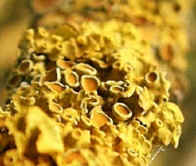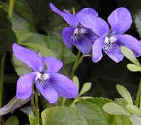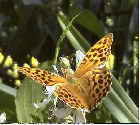Ancient Woodlands
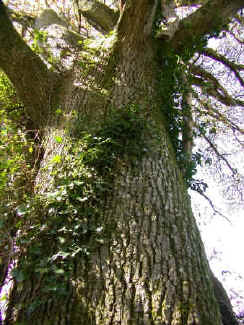
Ancient woodlands in Britain are those which have been continuously wooded for a minimum of three to four hundred years, (although not necessarily with the same type of tree cover). They are frequently very diverse and will often also contain rare or unusual species. They may also have historical and archaeological significance, because of the low level of physical disturbance.
| What is Ancient
Woodland? Ancient woodland is designated as being land which has been continuously wooded since AD1600 in England and Wales, or AD1750 in Scotland. (The difference arises because of the timing of available historical survey information.) These dates mark the beginning of reasonably accurate historical information on local land use, often in the form of estate maps. There are some records prior to this, notably the Domesday Book. This was an amazingly detailed inventory for England, produced in 1086 and compiled on the orders of the monarch of the time, King William. Some ancient woods are mentioned in the Domesday Book. Other than this, there are unlikely to be reliable records to prove the existence of individual woods prior to 1600. It should be appreciated that while 300 - 400 years seems suitably 'ancient' in human terms, it is a mere blink of an eye in Nature's time scale. To put it in perspective, this is less than half the lifespan of a single large Oak tree which may live for up to a thousand years!
Ancient woodlands are habitats which can have enormous biodiversity. They may contain much of the same biodiversity present in more recent woodlands. However, the great age of many of the trees and their resultant large size, thick, cracked, fissured bark and rot-holes, all provide a great many additional microhabitats for other species. The sheer age of the habitat itself and the absence of major physical disturbance also gives rise to a continuum of conditions which favour a variety of rarer species. In particular, this would include species which are either slow to establish and, or which require very particular conditions in order to survive. This means that ancient woodlands have potentially far greater biodiversity than more recently established woodlands. Individual old trees provide an amazing number of microhabitats for other plants and animals. Many different kinds of weird and wonderful beetles and other invertebrates may live in the cracks in gnarled and fissured old bark. Knotholes and hollow centres in the heartwood of the tree, caused by wood-rotting fungi, can again support a great variety of different types of invertebrates, as well as providing nesting holes for birds and small mammals. Many of the invertebrates found in this type of microhabitat have very specific requirements and are found nowhere else. For example, a small black beetle, Dorcatoma ambjoerni, is a real specialist as it has been found only inside hollow beeches, in the fruiting bodies of the bracket fungus, Inonotus cuticularis.
Ferns and mosses, which mostly require fairly damp conditions, are common woodland plants. Different kinds of mosses grow on the woodland floor, as well as on the bark of tree branches and trunks. Together with the lichens, they provide another entirely different range of microhabitats for small invertebrates such as mites and spiders. The presence of particular species of ferns, mosses and lichens can be used to indicate ancient woodland status. Where ancient woods have been coppiced over the centuries, many plants other than trees will also abound. These will range from small herbaceous plants, such as Wood Anemones, carpeting the woodland floor, to a variety of shrubs and understorey trees. These might include Wild Service and Small-leaved Lime. The reduced shading in coppiced areas allows a greater diversity of plants to flourish. The practice of coppicing trees in rotation through the wood, rather than all at once, meant that there were always suitable light conditions in some part of the wood. Even if particular areas grew up and became shaded over, the underlying plants could survive by colonizing other areas as they were coppiced.
Thick, springy layers of leaf litter underfoot, accumulated over centuries, enrich and modify the underlying woodland soil. The leaf litter will host innumerable invertebrates feeding on the leaf litter itself. In their turn, they will provide food for mini-hunters of the woodland floor, such as centipedes and spiders. Hundreds of different types of fungi, largely invisible to the naked eye except when fruiting, will infiltrate and decompose standing, or fallen, rotting tree trunks and branches. Networks and mines of tunnels in the rotting wood may be inhabited by some of the wide range of invertebrates in Britain which live in this microhabitat. The only indication of their presence may be small entrance or exit holes, with no hint of the labyrinths within.
Continue to Types of Ancient Woodland
|
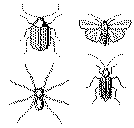 Ancient Woodlands and
Biodiversity
Ancient Woodlands and
Biodiversity